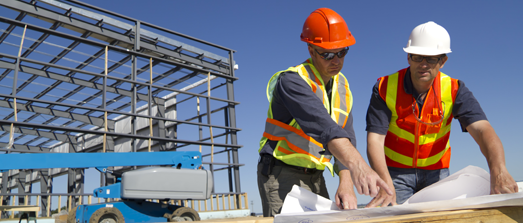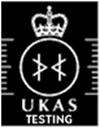ADVICE FOR NOISE SURVEYS IN LONDON
Planning and Noise Guidance for London
What is the aim of this noise survey guidance?
AT Acoustics has put this guidance note together to assist small builders, developers and consultants who are involved in developments where planning permission is a requirement and a London noise survey is a consideration.
When is a London noise survey usually required?
London Noise surveys are normally required where:
» The application is for proposed noise sensitive development, such as residential, next to existing sources such as major transport routes, industry or commercial uses.
» The application is for a development that has the potential to cause noise disturbance to existing residential properties. For example, industry, or other development with fixed machinery/plant.
Should the London noise survey be submitted as part of the planning application?
Yes, as enables the Environmental Protection Team to assess if the proposed development is suitable for the area, and that adequate noise controls can be implemented.
The problem with submitting the noise survey later on in the process is that delays may be incurred to application process. It is often not possible to grant planning consent with a condition requiring a London noise survey at a later date, as until a noise survey is completed the Environmental Protection Team cannot assess what the noise impact may be to the area of the development.
How do I get a London noise survey done?
A London noise survey needs to be carried out by a suitably qualified acoustic consultant. APT Acoustics is UKAS accredited company and therefore our reports are accepted by all favoured by all councils. APTs provide comprehensive and easy to follow noise survey reports at competitive prices.
What London noise survey methods are accepted?
Usually the Environmental Protection Team, will be able to advise on the methods used for a noise survey. However as a general rule the following methods will be accepted provided they are suitable for the project/development. Please note this is not an exhaustive list:
» PPG24 for the assessment of noise affecting noise sensitive developments near to existing sources of noise, mainly relating to traffic sources. A full 24- hour London noise survey is normally required although the shortened measurement procedure in the Calculation of Road Noise (CRTN) can be used if appropriate.
» BS4142:1997 for the assessment of industrial noise that may affect existing residential property, mainly used for fixed industrial plant such as fans.
More Information on PPG24 London Noise Surveys.
PPG24 Noise surveys are undertaken when sensitive developments near to existing sources of noise, often where rail and road traffic sources are close proximity to the proposed development. Where the noise levels are shown as NEC category B and above, APT Acoustics will look for noise reduction measures to be put in place that will achieve the "good" internal noise level criteria in bedrooms and living rooms set out in BS8233:1999.
For outdoor garden areas, noise levels should be less than or equal to 55 dB(A) as recommended in the World Health Organisation Guidelines on Community Noise. Where the noise levels are shown as NEC category D, the EPT would recommend that planning consent be refused; although, in isolated cases this decision can be overturned if adequate noise control measure can be implemented to the development.
For clarification the noise exposure categories, which the local planning authority would determine are:
» NEC A. Noise need not be considered as a determining factor in granting planning. The noise level at the high end of the category should not be regarded as a desirable level.
» NEC B. Noise should be taken into account when determining planning applications and, where appropriate, conditions imposed to ensure an adequate level of protection against noise.
» NEC C. Planning permission should not normally be granted. Where it is considered that permission should be given, for example because there are no alternative quieter sites available, conditions should be imposed to ensure a commensurate level of protection against noise.
» NEC D. Planning permission should normally be refused.
After we have carried out the London noise survey, APT Acoustics can offer noise mitigation advice to help your project attain planning approval.
Acceptable Noise Levels for Habitable rooms
These following noise levels are based on "good" Internal noise levels for bedrooms and "reasonable" internal noise levels for living rooms, as set out in British Standard, BS8233:1999:
Time Area Maximum noise level
Living Room Daytime noise
07:00 - 23:00
Living rooms 40 dBLAeq (16hr)
Outdoor amenity 55 dBLAeq (1hr)
Bedroom Night time noise
23:00 - 07:00
Bedrooms
23:00 - 07:00
30 dBLAeq (8hr)
45 dBLAmax
More Information on BS4142 London Noise Surveys
Industrial noise that may affect existing residential property under BS4142:1997
Where possible the noise from the industrial source should not exceed the existing background level of noise. Where this is not possible, the Environmental Protection Team may accept that it could exceed above the background level of noise of 3 dB(A), although full justification will be needed of why the lower noise level cannot be achieved. Noise sources that have a tonal or low frequency element should be assessed carefully to ensure they are not prominent above the existing background level of noise. APT Acoustics can undertake your BS4142 London noise survey, contact us know at info@airpressuretesting.net
What information needs to be included in my London noise survey report?
Reason for/scope of report (which will be clarified by the EPT & Acoustic Company)
» The name of the proposed development to which London noise survey relates
» Location plan of proposed development
» Methodology used including location of noise monitoring locations, equipment used, weather conditions
» Any deviations from the corresponding methodology/standard
» A full table of results
» Assessment of results according to standards used
» Recommendations for noise control measures - if required
» Full calculations of the noise reductions expected to support any suggested noise control measures
Noise between residential and commercial properties
APT Acoustics can check to that noise reduction measures to be put in place that will achieve the "good" internal noise levels in living rooms and bedrooms as set out in BS8233:1999. In addition, particular attention should be given to noise sources that have a tonal or low frequency element such as loud music that can travel readily through building structures and cause significant disturbance.
Are there any noise reduction measures that the Council prefers on your Development?
Where possible the noise should be controlled at source. For example, the inclusion of noise barriers next to a busy road, or an enclosure around a piece of industrial plant. The developer should also look at the design and layout of the proposed development to establish if changes will reduce the level of noise, i.e. residential accommodation designed with no windows facing a busy road or railway track or the inclusion of acoustic trickle vents.
As a last resort, noise reduction measures such as acoustic glazing to habitable rooms may be acceptable. Any proposal to reduce noise either at source, by design and layout or by building treatments such as glazing should be supported by full information/calculations to indicate the likely level of noise; our London noise survey reports contain full noise predictions. Where plant is to be installed on a roof or wall then the acoustic output of the proposed plant should be assessed and spec'd accordingly.
Simple Design measures to control Noise.
Layout, orientation and screening of buildings should be considered before sound insulation design:
» Position and orientate the development to minimise noise disturbance, i.e. minimise windows on the elevation facing traffic.
» Where possible avoid placing bedrooms next to kitchens, living rooms or bathrooms in adjacent properties.
» Where possible avoid placing bedrooms next to stairwells, entrance halls or lift shafts
» Ideally no windows should face a busy road, railway or commercial activity. If this is not possible, only windows of non-habitable rooms such as kitchens and bathrooms should face a noise source.
What Instruments Should be Used.
APT Acoustics use the latest Norsonic class 1 integrating sound level meters, conforming to BS 6698/IEC 61672. The London noise survey should not be undertaken with anything less than a class 1 Analyser.
Evidence of Instrument Calibration
The instrument shall be calibrated to the manufacturer's standard or by a National Accreditation of Measurement and Sampling UKAS accredited laboratory within the last year. A current certificate of calibration should be available and a copy included in the assessment report. The response of the instrument should be carefully checked before and after each measurement using a field calibrator. Any calibration drift shall be recorded and reported. The portable calibrator should itself have been calibrated by a UKAS accredited laboratory within the previous 12 months. A current certificate of calibration should be available and a copy included in the London noise assessment report.
Impact Assessment
APT Acoustics consultant will understand or have agreed with the environmental protection team the appropriate way to carry out a noise impact assessment.
Baseline Situation
Before any judgement can be made on the likely impact of a development, it will usually be necessary to have a full understanding of the existing noise in the vicinity of the receptor.
This is achieved by carrying out a London noise survey of background or ambient noise levels over periods of time representative of the times and days when the noise source will be operational. Depending on the assessment method used, the baseline will usually be determined by measuring the LA90 or the LAeq. In practice both will usually be measured simultaneously.
The LA90 is the 'A' weighted noise level exceeded for 90% of the measurement period. Typically this is called the background noise level if it relates to a period when the noise source is not operational. The 'A' weighting is a correction applied within a sound level meter to adjust the response of the meter to match the response of human hearing at different frequencies. The LAeq is as an average noise level over the measurement period. It is a popular and universally used measure which correlates well with human annoyance.
Contact Us
We home this information has helped you to better understand the noise survey process for your development. If you would like more advice on your London noise survey please contact us now on: 0206 692650 or email us at info@airpressuretesting.net
APT Sound Testing Services
Head Office: Sayells Farm, 7 Harlington Road, Upper Sundon, Bedfordshire, LU3 3PE




 Part E Sound Tests
Part E Sound Tests

